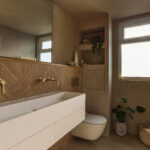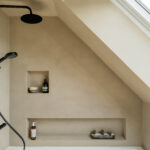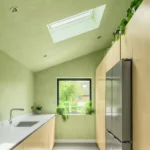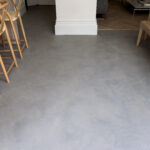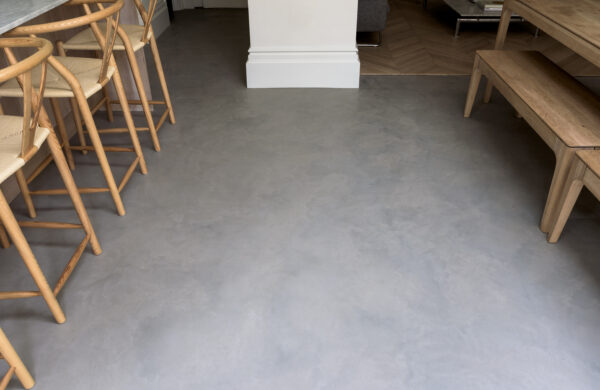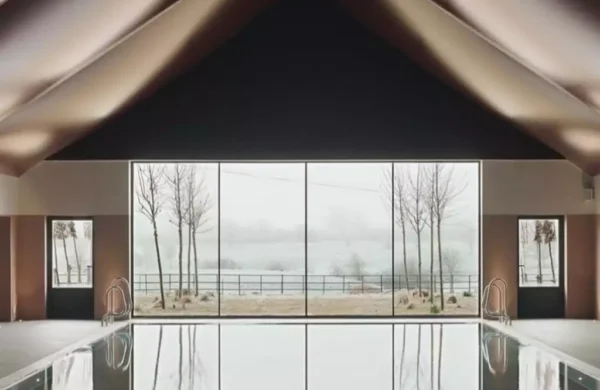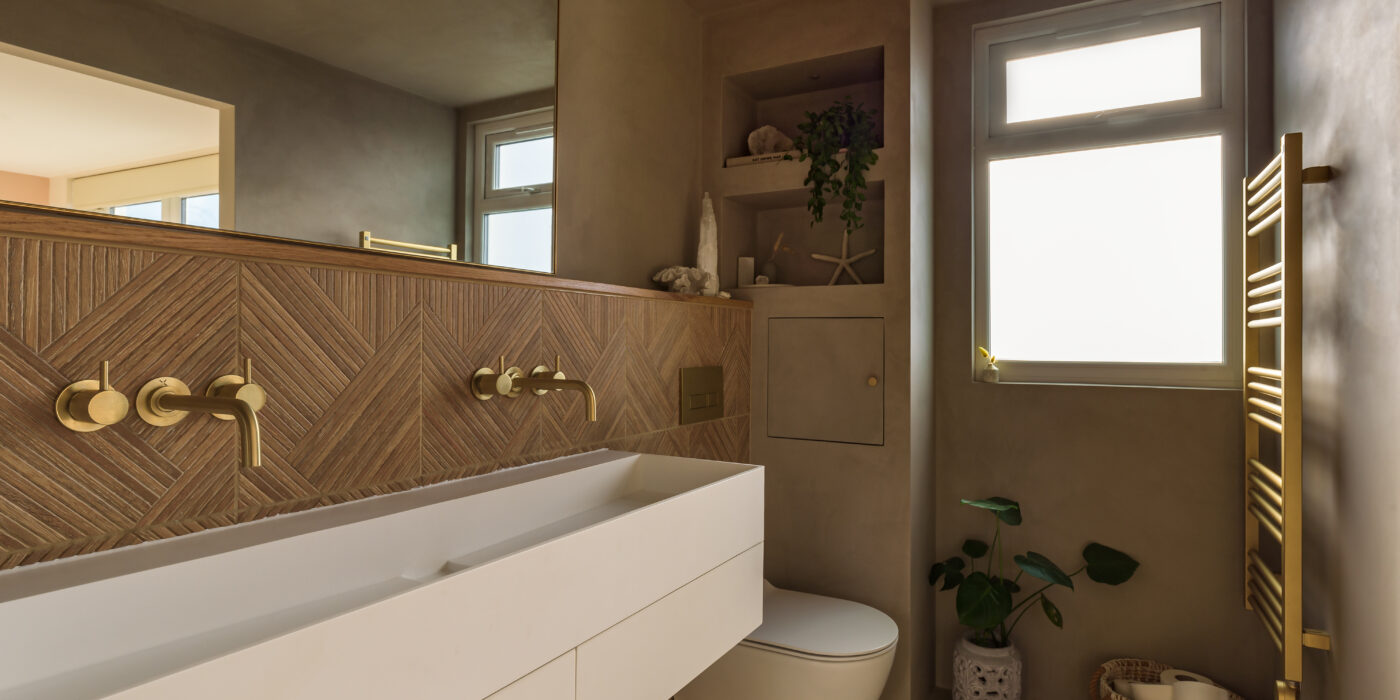
Choosing the right surface finish can make all the difference in achieving your desired aesthetic and functionality. Microcement and polished concrete are popular options, offering sleek, modern appeal.
But which one is the best fit for your project? At Forcrete, our expertise in microcement allows us to offer valuable insights into the key differences between these materials, helping you make an informed decision.
What is microcement?
Microcement is a thin, cement-based coating that our installers can apply to almost any surface. At Forcrete, our advanced microcement systems offer a seamless, stylish, and durable finish.
Microcement is applied at just 2-3mm thick, making it ideal for floors, walls, and furniture. It provides a modern, minimalist look without requiring extensive construction.
Key benefits of microcement include:
- Seamless, joint-free finish
- Highly durable and resistant to wear
- Waterproof when sealed correctly
- Available in a wide range of colours and textures
- Suitable for both residential and commercial spaces.
What is polished concrete?
Polished concrete is created by mechanically grinding and polishing an existing concrete slab to achieve a smooth, glossy finish.
Its robust nature and contemporary appearance make it popular in industrial or large commercial settings.
While it can look stunning, the process involves specialised machinery and is more invasive compared to microcement applications.
Key benefits of polished concrete include:
- Highly durable and long-lasting
- Reflective, polished surface enhances natural light
- Minimal maintenance over time
- Suitable for large-scale applications
Microcement vs polished concrete: Key differences
Application process
- Microcement: Applied in thin layers by hand, making it a versatile choice for renovations without removing existing materials.
- Polished concrete: Requires an existing concrete slab, with grinding and polishing using heavy machinery.
Design flexibility
- Microcement: Available in various colours and textures, including matte, satin, or gloss finishes.
- Polished concrete: Limited colour options, with the final look depending on the concrete mix and aggregate.
Maintenance and durability
- Microcement: Sealed for durability and easy cleaning. Suitable for both wet and dry areas.
- Polished concrete: Low maintenance but prone to cracking, especially in high-traffic areas.
Cost and time
- Microcement: Generally more affordable for smaller spaces with a quicker application process.
- Polished concrete: This can be cost-effective for large commercial projects, but often requires more time and labour.
How much does microcement cost compared to polished concrete?
Microcement vs. polished concrete costs vary depending on surface area, labour, and material quality. On average, microcement costs between £80-£150 per square meter, while polished concrete ranges from £100-£180 per square meter, depending on the complexity of the installation.
Microcement is more cost-effective for smaller projects, as our installers can apply it over existing surfaces without requiring major construction work.
In contrast, polished concrete requires an existing concrete slab and often involves additional preparation costs such as grinding, sealing, and polishing.
Additionally, Forcrete microcement offers a seamless, stylish finish with built-in waterproofing, eliminating extra sealing costs and making it a practical choice for bathrooms, kitchens, and modern interiors.
Is microcement more expensive than polished concrete?
Microcement is generally more affordable for smaller residential projects, while polished concrete can be cost-effective for large-scale commercial applications. The main cost difference comes down to installation requirements.
- Microcement is applied in thin layers (2-3mm) over existing floors, walls, or furniture, reducing labour and material costs.
- Polished concrete requires heavy machinery to grind and polish a concrete slab, making the process more time-consuming and labour-intensive.
For spaces like bathrooms, kitchens, or feature walls, microcement is a budget-friendly choice due to its versatility and ease of installation. However, polished concrete may offer long-term durability at a competitive cost for large warehouses or industrial buildings.
Which product is more eco-friendly?
When comparing microcement vs polished concrete for sustainability, microcement is often the more eco-friendly choice.
- Lower material consumption – Microcement is applied in ultra-thin layers (2-3mm), using significantly fewer raw materials than a full concrete slab.
- No demolition required – It can be applied directly over existing surfaces, reducing waste and carbon emissions from construction work.
- Energy-efficient installation – Unlike polished concrete, which requires high-energy grinding and polishing machinery, microcement is hand-applied, reducing its overall environmental impact.
- Durability and longevity – High-quality microcement, such as Forcrete microcement, is designed to last for decades with minimal maintenance, reducing the need for replacements.
For those looking to create sustainable interiors, microcement offers an eco-conscious alternative to polished concrete without compromising style or performance.
Why choose Forcrete microcement?
At Forcrete, our microcement systems offer superior durability, style, and versatility. Unlike traditional microcement, Forcrete has built-in waterproofing technology, ensuring long-lasting protection without additional sealers.
Our network of approved installers guarantees a flawless finish tailored to your design vision.
Whether you’re transforming a bathroom, kitchen, or commercial space, Forcrete microcement offers the perfect blend of beauty and resilience.
Final thoughts
While polished concrete remains a strong option for large-scale industrial projects, microcement is an idea for residential and smaller commercial spaces. Its seamless finish, ease of application, and customisable aesthetics make it a standout solution.
If you’re considering microcement for your next project, contact us at Forcrete to discuss your vision. Our team of experts is here to help you achieve a sophisticated, modern look that lasts.
Explore the possibilities with Forcrete microcement – where durability meets design.


